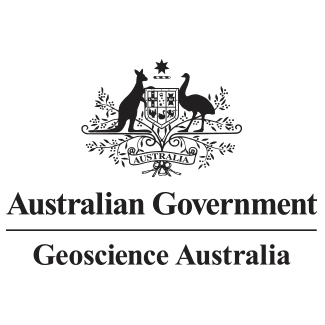Brief description
Geoscience Australia (GA) conducted a marine survey (GA0345/GA0346/TAN1411) of the north-eastern Browse Basin (Caswell Sub-basin) between 9 October and 9 November 2014 to acquire seabed and shallow geological information to support an assessment of the CO2 storage potential of the basin. The survey, undertaken as part of the Department of Industry and Science's National CO2 Infrastructure Plan (NCIP), aimed to identify and characterise indicators of natural hydrocarbon or fluid seepage that may indicate compromised seal integrity in the region. The survey was conducted in three legs aboard the New Zealand research vessel RV Tangaroa, and included scientists and technical staff from GA, the NZ National Institute of Water and Atmospheric Research Ltd. (NIWA) and Fugro Survey Pty Ltd. Shipboard data (survey ID GA0345) collected included multibeam sonar bathymetry and backscatter over 12 areas (A1, A2, A3, A4, A6b, A7, A8, B1, C1, C2b, F1, M1) totalling 455 km2 in water depths ranging from 90 - 430 m, and 611 km of sub-bottom profile lines. Seabed samples were collected from 48 stations and included 99 Smith-McIntyre grabs and 41 piston cores. An Autonomous Underwater Vehicle (AUV) (survey ID GA0346) collected higher-resolution multibeam sonar bathymetry and backscatter data, totalling 7.7 km2, along with 71 line km of side scan sonar, underwater camera and sub-bottom profile data. Twenty two Remotely Operated Vehicle (ROV) missions collected 31 hours of underwater video, 657 still images, eight grabs and one core. This catalogue entry refers to sediment oxygen demand measurements undertaken on seabed sediments (0-2 cm).Lineage
Maintenance and Update Frequency: asNeededCreated: 2015
Issued: 03 06 2016
text: westlimit=122.3883; southlimit=-14.2865; eastlimit=124.6521; northlimit=-12.8678
User Contributed Tags
Login to tag this record with meaningful keywords to make it easier to discover
Download the data (xlsx)
uri :
https://d28rz98at9flks.cloudfront.net/83178/TAN1411_SOD.xlsx![]()
Caswell Sub-basin - Browse Basin CO2 data package
- DOI : 10.4225/25/575F851FBFC03

- URI : pid.geoscience.gov.au/dataset/ga/83178

- global : 13d0ef19-a13b-6c54-e053-10a3070a2f65


